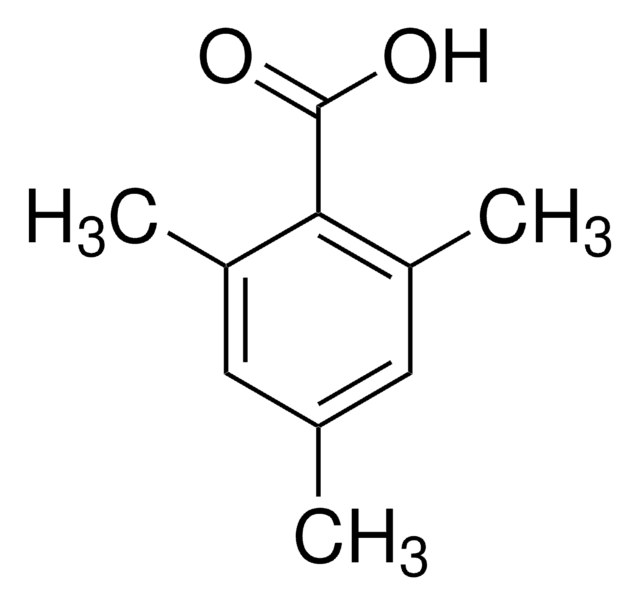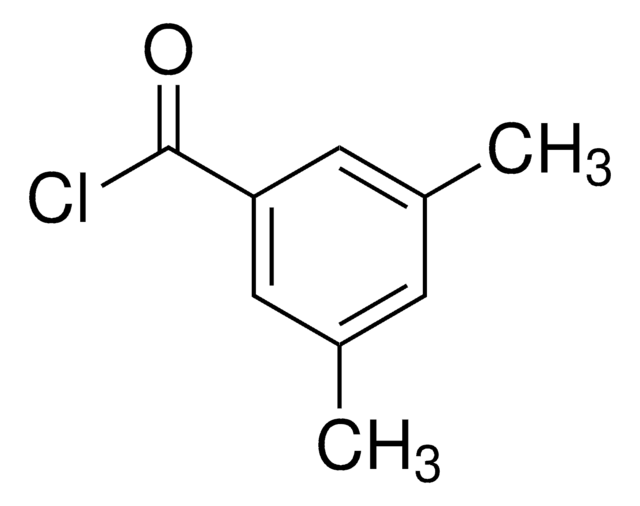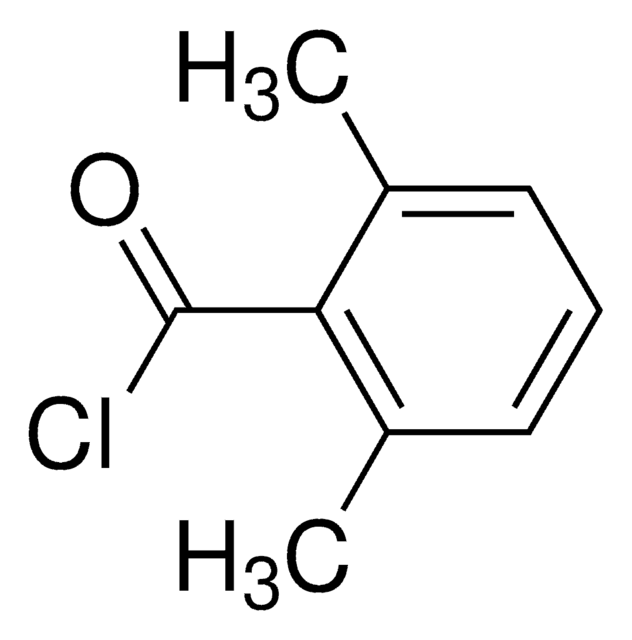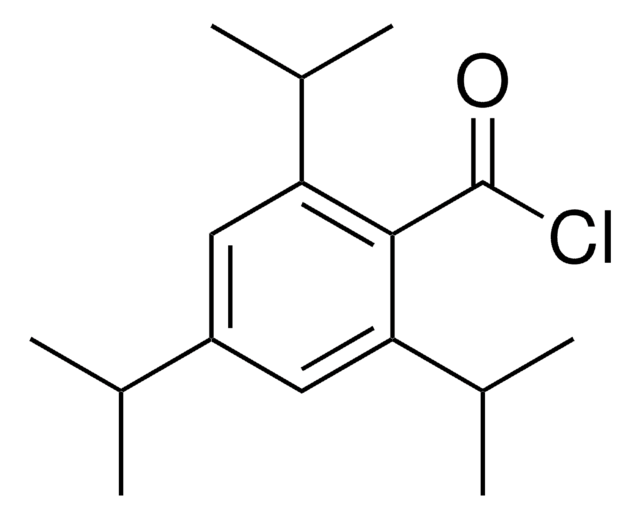All Photos(1)
About This Item
Linear Formula:
(CH3)3(C6H2)C(O)Cl
CAS Number:
Molecular Weight:
182.65
EC Number:
MDL number:
UNSPSC Code:
12352100
PubChem Substance ID:
NACRES:
NA.22
Recommended Products
Quality Level
Assay
97%
refractive index
n20/D 1.529
density
1.095 g/mL at 25 °C
functional group
acyl chloride
storage temp.
2-8°C
SMILES string
Cc1cc(C)c(c(C)c1)C(Cl)=O
InChI
1S/C10H11ClO/c1-6-4-7(2)9(10(11)12)8(3)5-6/h4-5H,1-3H3
InChI key
UKRQMDIFLKHCRO-UHFFFAOYSA-N
Signal Word
Danger
Hazard Statements
Precautionary Statements
Hazard Classifications
Skin Corr. 1B
Storage Class Code
8A - Combustible corrosive hazardous materials
WGK
WGK 2
Flash Point(F)
>230.0 °F
Flash Point(C)
> 110 °C
Personal Protective Equipment
dust mask type N95 (US), Eyeshields, Gloves
Choose from one of the most recent versions:
Certificates of Analysis (COA)
Lot/Batch Number
Don't see the Right Version?
If you require a particular version, you can look up a specific certificate by the Lot or Batch number.
Already Own This Product?
Find documentation for the products that you have recently purchased in the Document Library.
Customers Also Viewed
Cancan Xu et al.
ACS applied materials & interfaces, 10(12), 9969-9979 (2018-02-17)
Cell printing is becoming a common technique to fabricate cellularized printed scaffold for biomedical application. There are still significant challenges in soft tissue bioprinting using hydrogels, which requires live cells inside the hydrogels. Moreover, the resilient mechanical properties from hydrogels
Zhongliang Jiang et al.
Biofabrication, 12(3), 035006-035006 (2020-03-12)
Hydrogels formed via free radical-mediated thiol-ene step-growth photopolymerization have been developed for a broad range of tissue engineering and regenerative medicine applications. While the crosslinking mechanism of thiol-ene hydrogels has been well-described, there has been only limited work exploring the
Pengrui Wang et al.
Advanced healthcare materials, 9(15), e1900977-e1900977 (2019-11-08)
Growth factors (GFs) are critical components in governing cell fate during tissue regeneration. Their controlled delivery is challenging due to rapid turnover rates in vivo. Functionalized hydrogels, such as heparin-based hydrogels, have demonstrated great potential in regulating GF release. While
Scott C Grindy et al.
Soft matter, 13(22), 4057-4065 (2017-05-24)
Control over the viscoelastic mechanical properties of hydrogels intended for use as biomedical materials has long been a goal of soft matter scientists. Recent research has shown that materials made from polymers with reversibly associating transient crosslinks are a promising
Xuanyi Ma et al.
Acta biomaterialia, 95, 319-327 (2018-12-24)
Human induced pluripotent stem cell - derived cardiomyocytes (iPSC-CMs) are regarded as a promising cell source for establishing in-vitro personalized cardiac tissue models and developing therapeutics. However, analyzing cardiac force and drug response using mature human iPSC-CMs in a high-throughput
Our team of scientists has experience in all areas of research including Life Science, Material Science, Chemical Synthesis, Chromatography, Analytical and many others.
Contact Technical Service











